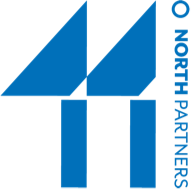Purpose: Time Well Spent
May 18, 2016
While Stephen Covey is credited with popularizing the concept of Urgent vs. Important with his time management matrix, it was actually Dwight D. Eisenhower who brought the concept center stage in 1954 when he quoted then-Northwestern University president, J Roscoe Miller: “I have two kinds of problems, the urgent and the important. The urgent are not important, and the important are never urgent.” Eisenhower went on to repeat these words often and was known as a masterful organizer who consistently assessed urgency and importance – and delegated accordingly . . .
It’s not surprising that presidents and management gurus have been talking about this concept for the past 60+ years. Separating the urgent from the important is all about how we spend our time – and there is arguably no greater influence on, or measure of, our lives. We talk about time every single day. We organize our lives around it. We can never get enough of it. We can’t buy more of it. We can’t manufacture, genetically modify or clone it. And, until it claims us, every single one of us has the same number of hours every week: 168. That’s the same amount we had in 1954, and the same amount we will have in 2054.
But, the speed at which big changes are happening is accelerating, resulting in time compression or templosion. In 1954, the transistor radio was the most popular electronic communication device in history. It was revolutionary because it was pocket-sized and you could listen to music anywhere. The reign of the transistor radio lasted a full 20 years, until boomboxes and cassette players made it obsolete. Imagine a popular app or iPhone release or wearable tech item lasting 20 years!
Because time is finite and the world is moving faster than ever, we need to find ways to make it count. To sift the important out of the urgent. To capture the economic value of time.
The simplest way is through purpose.
Or significance, which is the dimension self-discipline strategist and author Rory Vaden adds to the standard urgent vs. important matrix. In Vaden’s work, urgency is how soon does this matter, important is how much does this matter and significance is how long is this going to matter. Instead of trying to fit more into your day, Vaden argues, think about how you can invest your time today to create more time and opportunity tomorrow.
Experts agree there is no better antidote to an unprecedented pace of change and hyper-competition than purpose. Today’s organizations cannot afford to operate without a bold, timeless vision; a clear and unwavering set of values and an ability to reinvent strategy on an ever-compressing timetable. These sound like relatively easy cures, but they require focus, leadership, consistency, curiosity, open-mindedness and strength of conviction . . . all of which can be hard to maintain when the very institutions and economic foundation that have shaped us are shifting right underneath us.
To make the most of our time, individually and collectively, we can organize our tasks into urgent and important boxes. We can layer in the notion of significance, evaluating a task’s relative value based on its duration of impact. These activities can bring us closer to productive, meaningful use of time.
We can take it a step further and literally track all our hours, as columnist Laura Vanderkam did for an entire year. Instead of validating the frustrating limits of 168-hour weeks, Vanderkam discovered a sense of abundance, brought about by seeing evidence of how much free time she actually had each week, and learning that tracking it nudged her to make wiser choices. (If this appeals to you, note that it took her three minutes a day to track her hours – or about 18 hours for the year.)
A less intensive twist on Vanderkam’s time tracking approach was recommended by Sheryl Sandberg in her recent Berkley commencement address. Sandberg’s New Year’s resolution was to write down three moments of joy before going to bed each night, and she credits this simple practice with changing her life. No matter what happens each day, she goes to sleep thinking about something cheerful. And we can safely assume that these moments of joy are connected to her purpose and values – making this activity a great way to stay in touch with what matters to you.
While there’s no getting around the fact that we each have 168 hours at our disposal every week, there are definitely ways to make those hours count – for ourselves, our organizations and the futures of both.
In Laura Vanderkam’s apt words, “Life is full, and life has space. There is no contradiction here.”
